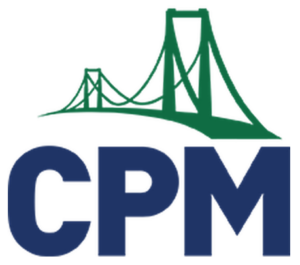Lorna Vazquez, WI, lornavazquez@cpm.org
Tracy Frank, WI, tracyfrank@cpm.org
This past fall through CPM coaching, we partnered with a middle school in Wisconsin that was in its second year of CPM implementation. There were more teachers than one of us could cover in the time we had available so we decided to team up. And we are glad we did, as the experience proved to be a rewarding one, not only for the teachers we coached, but for each of us as coaches. We each worked with half of the teachers over a four-month period. One of us supported the 7th grade team while the other supported the 8th grade team. We were able to collaborate on supporting the 6th grade team by co-planning with their grade level team, and then splitting the teachers between us for the class visits and reflections.
During our first visit we felt very limited in what we could accomplish because the teachers at this school are required to attend numerous additional meetings during their prep periods. They have so many meetings in fact that our initial visits felt too much like site visits rather than coaching, with only a minimal amount of time for establishing rapport. Teachers welcomed us into their classrooms to observe and gather data based on their pre-determined goal, yet the time available to pre-plan was nearly non-existent. It took a second visit and some interim personalized email work to get to know the teachers and for them to get to know us. They began to see us as coaches available to support the teaching and learning process rather than someone else who was there to give them one more thing to do during their already jam-packed schedules. They responded by embracing the coaching process and began to appreciate the power of discussing lessons ahead of time. The teachers and their math leaders were able to open up more time for us to facilitate collaborative lesson planning and each teacher graciously made time for a solid lesson reflection time after we collected data in their classrooms.
The goal they had set for themselves for this coaching work was: Math staff will develop strategies, based of the College Preparatory Math materials, aimed at promoting mathematical discourse between all students in order to improve Map Test scores from fall 2016 to spring 2017.
About half way through our coaching work, we identified four structures that we felt would help these teachers promote mathematical discourse in pursuit of their goal. We used these to provide focus both for pre-planning and observations as well as when debriefing lessons. We encouraged teachers to keep these structures in mind as they planned lessons and when they reflected on how their plans unfolded in the classroom.
- What specific Study Team and Teaching Strategies – designed to encourage and require conversation – are appropriate for this lesson?
- Which of my questioning strategies will require student response and therefore increase discourse?
- How can I focus on managing the mathematics vs. managing behaviors?
- How do I plan and pace this lesson to ensure that the mathematics remains the focus of the dialog?
We created written summaries of these four structures including tips and suggestions for each, and shared them with the teachers through weekly support emails.
The goal these teachers had set included a way to measure increased achievement that they hoped would be a result of improved dialog. However, we also wanted to measure perceived changes in the quality and quantity of discourse as well as what teachers had done to inspire better discourse. We were able to assess progress towards those desired outcomes during our last debriefing meeting at the end of the coaching work when we asked each teacher the two questions listed below. What follows is what the teachers shared with us. (Note: where answers are direct quotes it is noted, otherwise we paraphrase their comments.)
1. In what ways has student-to-student discourse changed in your math classrooms since the start of our coaching work almost four months ago?
- Increase in vocabulary use has been noted.
- Increase in students valuing each other’s input.
- By the end of the last chapter students were using more academic language from that chapter.
- 8th grade improved over the year from where they started.
- “Improved a little bit. Students are not just waiting for the smart kid to answer the question in some of the teams.”
- By getting your feedback I was able to raise awareness of the need for and value of discourse with the students, which increased their willingness and ability to communicate.
2. What teaching practices have you added or altered that might have contributed to those changes?
- Smaller groups (lots of partner work).
- Reminding students that you are listening to their words.
- Seeing if all students in a group can be accountable to a teacher question.
- Believing in students’ ability to have the conversations is key.
- Questioning and rephrasing the question.
- Emphasis on how important it is to purposefully decide how to structure teams.
- Focus on key vocabulary.
- Team to team conversation is encouraged through Huddle, I Spy, Swap Meet, and whole class discussion.
- Using STTS that not only get them up and moving but provide opportunities to talk: Swap Meet, Proximity Partners, Walk and Talk, for example.
- Students sharing their work on the board and selecting the order of student work.
- Peer edit has worked well.
- Eliciting student thinking and giving status to students who are lacking confidence.
- Getting myself out of the center and not being the teacher with the right answer.
- We have a better idea of how to plan lessons collaboratively.
Our summary along with the feedback we got from the teachers was shared in aggregate form (without names) in a final email. We encouraged them to learn more about each other’s strengths and continue to find time for collaboration on lesson planning and lesson reflection.
Over time the coaching process came alive at this school and reinforced our experience that CPM’s support through coaching has been and can continue to be a significant opportunity for schools and teachers. The added bonus for us was that we learned about our own abilities as coaches and just like the teachers we coached – we benefited from true collaboration.

